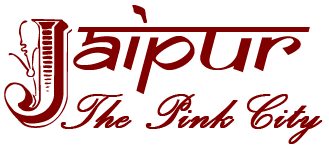
Jaipur Travel Guide
Jaipur Heritage Monuments : Albert Hall Museum
 |
Jaipur Travel Guide Jaipur Heritage Monuments : Albert Hall Museum |
|
Book Cheap Flights, Hotels |
|
|
|
|
|
Holidays >> Travel >> Things to do >> India >> Rajasthan >> Jaipur >> Heritage >> Monuments >> Albert Hall Museum Albert Hall Museum : An Industrial Art and Craft MuseumMuseum, Art, Science, Art Gallery, Art Museum, History Museum, Albert Hall Museum, Arts and Crafts Museum, Monuments in Jaipur, Hot spots for Jaipur Heritage Tour, Special Attractions in Jaipur Tour, Hotels, Cheap Flights, Holidays, Travel, Vacations, Trip Advisor, Things to do, India, Travel Agency, Air Tickets, Heritage, Jaipur, Travel Planner, Monuments, Rajasthan, Car Rentals, All Inclusive PackagesPottery displays in the collection of Albert Hall Museum of Pink City Jaipur include: 1. Pattan Red & Black Ware 2. Indargarh Lacquer Ware, Chillums 3. Bikaner Gold Lacquer on Pottery 4. Bengal Carved Pottery It is amazing to see the large collection of various kinds of pottery of India at one place during Jaipur tour. Pattan Red & Black Ware
Pattan Black Ware is characterized for its dense black surface caused by reduction smoke firing in the kiln. They are heavily carved with intricate designs and ornate handles. There is a common lotus petal carved ring at the neck, rim and foot which combined with a delicate lotus bud knob and a finely modeled foot rim makes this ware outstanding for its technical elegance and contoured shape. Chillums
They are made on the wheel with cut work in the area where smoke is required to escape to allow for longer burning. Simple graffito decoration is done through, bands of colored slip. Bikaner Gold Lacquer Work on Pottery
This technique was used to decorate the Bikaner screen at the Raj Niwas Hall at the Indo Colonial Exhibition. It was also used to decorate a large hall in the palace of the Maharaja. The craft was influenced by the intervention of Ms Talbot, the wife of Major A.C. Talbot the political agent at Bikaner in the late 19th century, who gave the craftsmen white earthen vessels of different well known forms instead of the old sauce or beer bottles, metal cans, sheets of tin forming the backs of bazaar mirrors, bedstead legs, etc that they used to lacquer. The first specimens were all sold at the Jaipur Museum as soon as they used to arrive. Among the other articles produced were wooden cabinets, wooden plaques to serve as book covers, vases of all kinds in stoneware, clay, porcelain glass and leather as well as charpoy or bedstead legs, chairs, boxes, portions of ekkas pony carriages or baillies bullock carts. Pattan Kagazi Painted WareThe lightness of the ware is due to the special qualities of plasticity of the clays. Similar kagazi white and gold painted and perforated ware is found at Alwar.
The techniques for the application of the gold painting, is similar to that of Amroha where before baking, the pot is covered with a coating of khariya mitti. For the application of the gold leaf the pattern is broadly marked in wax and the leaf put on over this. When the gold has worn away, it leaves a green marking. Other objects made by this technique are water jugs, smoking pipes and bowls or chillums and hukka. In 1886 there were only 6 families of potters who still knew this technique and it was kept a secret. Suggested Readings for JaipurTags: Museum, Art, Crafts, Science, Art Gallery, Art Museum, History Museum, Albert Hall Museum, Arts and Crafts Museum, Monuments in Jaipur, Hot spots for Jaipur Heritage Tour, Special Attractions in Jaipur Tour, Hotels, Cheap Flights, Holidays, Travel, Vacations, Trip Advisor, Things to do, India, Travel Agency, Air Tickets, Heritage, Jaipur, Travel Planner, Monuments, Rajasthan, Car Rentals, All Inclusive Packages, Photos, Images, Pictures, Jaipur the Pink City, jaipurthepinkcity.com
Comments |
|
|
|
Albert Hall Museum Page 1 | 2 | 3 | 4 | 5 | 6 | 7 | 8 | 9 | 10 | 11
Book Train Tickets